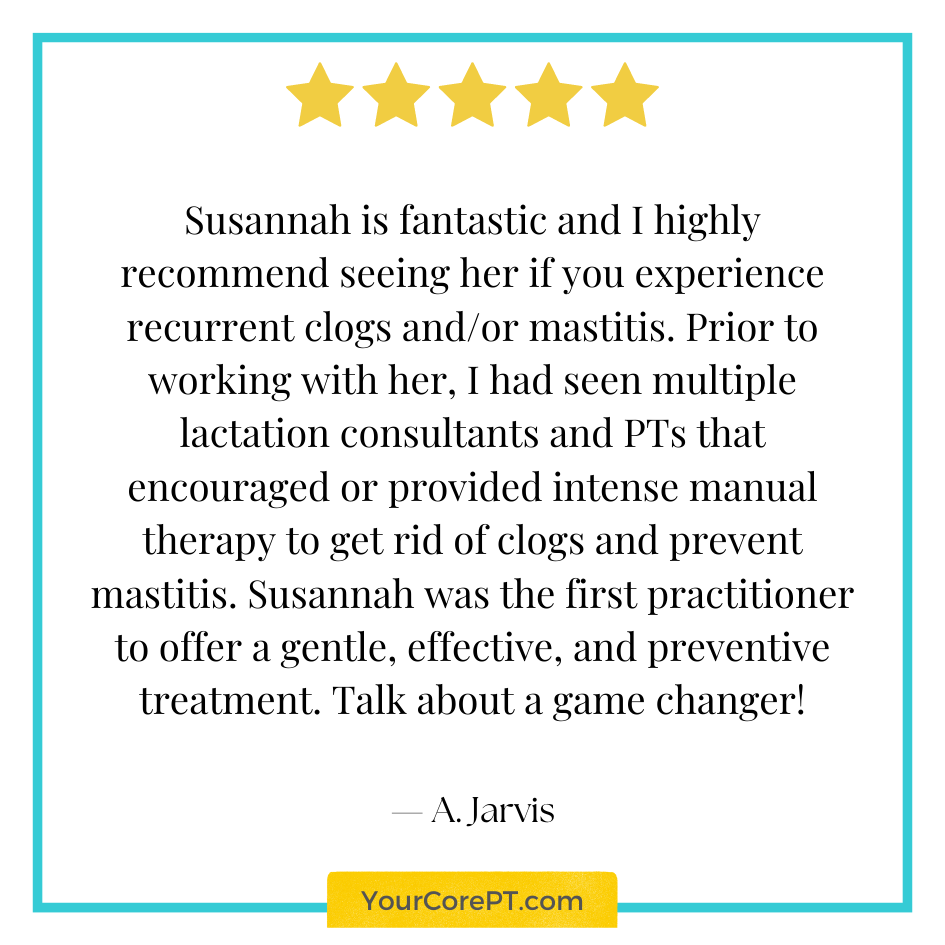Breast Cancer Rehab
living beyond breast cancer…
Don’t let the side effects of treatment be a reminder of your breast cancer journey.
Greater than 60% of breast cancer survivors experience at least one or more side effects related to medical interventions 10 years after treatment (Schmitz et al, 2010). So many times my patients have protested ‘why didn’t I know about you sooner?!’ Comprehensive, expert care, early intervention, and PRE-habilitation are available to you now. I use my brain to teach breast cancer rehab to professionals internationally, but my hands extend to treating my Asheville community locally.
KickPink is my mission; our goal is to help prevent and alleviate the disruptive side effects of breast cancer treatment so that people who have/had breast cancer can heal in mind, body, and spirit.
Treatment for potential side effects of breast cancer include:
Radiation fibrosis
Cardiotoxicity and heart health
Peripheral neuropathy & impaired balance
Cancer-related fatigue
Osteoporosis & bone health
Joint pain
Sexual dysfunction
Post-op scarring
Post-op pain
Shoulder dysfunction
Core weakness
Lymphedema
Lymphatic cording
Seromas
FAQs:
-
The best time to begin PT is after someone has been diagnosed with breast cancer (a.k.a. “pre-habilitation”), but physical therapy can be incredibly important during and/or after cancer treatment ends. Pre-habilitation allows for assessment of your baseline function, review your medical plan of care (which can change), educate you about the signs and symptoms of side effects as well as give you prevention strategies.
For example, surgery is often the primary treatment to remove the cancer and biopsy nodes for metastasis. Pre-habilitation provides self-care strategies and safe exercises specific for your operation to begin immediately in order to alleviate pain, swelling, and complications like seromas. As you heal, I will give you progressive exercises to assist with strength and range of motion so that you can return to optimal function. If you have a mastectomy, this applies to delayed reconstruction as well.
If you are beginning radiation treatment, baseline measures such as circumferential measures of the arm and range of motion measurements of the shoulder help address potential side effects like lymphedema, lymphatic cording and radiation fibrosis.
Chemotherapeutic drugs have various long and short term side effects. Baseline measures for balance, gait, strength, sensation, posture, and cardiopulmonary function, can help determine progressive therapeutic exercise to assist with balance, endurance, and bone health, as well as prevent cancer-related fatigue.
Hormone therapies can prevent cancer from recurring, but are sometimes associated with joint pain and sexual dysfunction. Pelvic PT can help restore vulvovaginal health and sexual appreciation.
No matter where you are in your cancer journey, it’s important to have a rehabilitation practitioner who understands conservative treatment for comprehensive breast cancer care.
-
YES! Even if you have started treatment, getting baseline assessments now and understanding your plan of care, will help you navigate treatment, prevent side effects, and initiate early treatment to limit the severity of potential side effects.
It is also important to note that people CAN come out of treatment feeling more embodied AFTER treatment than they did before. Everyone’s cancer journey is different, but having someone who understands the potential side effects of treatment, and helps you take a proactive approach to prevent them, is a necessary paradigm shift in cancer care. Medical interventions for breast cancer can feel passive and invasive; I want you to feel empowered with knowledge and action steps for optimal health.
-
Absolutely, yes. Side effects from breast cancer treatment like lymphedema, cardiotoxicity, osteoporosis, shoulder and sexual dysfunction can crop up years later. If side effects like this are present, it is important to see a rehab practitioner who understands how to modify treatment for safety and effectiveness based on passed medical interventions.
This triage-based approach to symptom management is typical by todays standards; treatment can still be very effective, but getting help sooner than later can improve treatment outcomes so you can get back to living the life you want minimizing side effects as soon as possible.
-
Frequency of PT sessions will vary based on the presence and severity of side effects and fluctuate based on what you need. Your goals and desire for support also dictate treatment frequency.
Out-of-network PT allows for an ongoing plan of care extending beyond the normal 12-week approval by insurance companies (you can return to see Susannah who understand your history at anytime without the requirement of a new evaluation).
-
There are many reasons:
Many doctors and patients are focused on life-saving treatment, and rehabilitation can feel overwhelming.
The medical system does not always consider side effects or have procedures in place for screening and referral.
Competent therapists who understand comprehensive rehab services are rare & can be hard to find.
Often breast cancer rehab is misconstrued as lymphedema treatment (which is only a small portion of comprehensive breast cancer care).
Many people think that symptoms will go away after treatment ends, but this is not always the case. Furthermore, some side effects can become symptomatic years later; this is why working with a therapist who understands side effects and compounding risks associated with various treatments, can help with baseline testing, education, and home programming to limit side effects and optimize quality of life.
-
No, you do not need a referral for PT in the state of NC, however, I do prefer to be on the same page with your oncologist and primary care physician; therefor (with your approval), I will fax your plan of care and speak with the appropriate provider(s) regarding your PT evaluation and outcomes related to your plan of care.
-
Pre-habilitation; assessing baseline function at the time of diagnosis, understanding your medical care plan and potential side effects in order to provide personalized education and prevention strategies to empower you through treatment and beyond.
Cold laser (LTU-904) - the only FDA approved laser for lymphedema and also works wonders for scar tissue and as a precursor to manual therapy too!
Manual therapy; myofascial release, visceral mobilization, manual lymphatic drainage, soft tissue and joint mobilizations, etc
.Progressive therapeutic exercise
Continuous decongestive therapy for lymphedema; manual lymphatic drainage, remedial exercises, short-stretch bandaging, garment fitting
Patient education = empowerment!
-
I am an APTA board certified women’s clinical specialist (WCS) as well as a certified lymphedema therapist (CLT).
I completed my residency at Duke University and Medical Center in 2012 in women’s health.
I created the first course in comprehensive breast cancer rehabilitation which I have taught globally.
I wrote ‘The Breast Bundle’ which is a collection of patient education handouts for practitioners to use in the clinic for patient education.
But most importantly…my heart is in it and elevating breast cancer care around the globe is my mission….
I created KickPink which provides continuing education and clinical resources for practitioners to streamline comprehensive breast cancer care and will be developing resources for people who have/had breast cancer over the decades to come.
Breast cancer became personal for me when my mother was diagnosed at age 12 and I became a caregiver for her. I also lost my best friend at the age of 25 to cancer. Over the years I have treated hundreds of breast cancer patients…watching so many people navigate a cancer diagnosis and treatment has provided some of the best teaching moments in life and I know there is so much left to be done in elevating cancer care. It won’t be done in my lifetime, and will continue to evolve, but through research, critical thinking, education, and advocacy we are making waves and this knowledge will be passed on and compound.



